Paper Mario: The Origami King was a game I expected to have a fun time with, but I wasn't sure how much I would enjoy it. After all, I loved Sticker Star, the fourth title in the Paper Mario series, but despised Color Splash, the fifth title. Those two games, along with Origam King, make up the "modern" Paper Mario trilogy, while the previous three titles: Paper Mario, The Thousand Year Door, and Super Paper Mario, make up the "traditional" Paper Mario trilogy. Much debate has gone on regarding which style is better. I sit as one of the few that enjoys both. Yet if I had to choose, I'd say that I prefer the formula of the traditional trilogy. As much as I loved Sticker Star, the modern Paper Mario formula simply could not compare.
Yet, after now completing The Origami King, I must retract that statement. My experience with the game was incredible, no doubt it will go down as one of my favorite Switch games. Every time I booted up the game, I felt......happy, like I was going to a magical world where nothing but fun awaited. So much did I enjoy it that I took long breaks throughout my playthrough, not wanting the magic to end. Looking back, I still can't believe how much I enjoyed it. It is one of the few games in which I can confidently say I wish I could wipe my memory of it to re-experience the magic all over again.
So for this review I want to talk about Paper Mario: The Origami King using a particular perspective. I want to explain not just why the game is special, but why it is in such a way the traditional Paper Marios could never be. For in many ways The Origami King is the modern Paper Mario formula done to perfection: think Sticker Star but better. Every area it succeeds in I long argued Sticker Star also succeeded. Every area I believed was a strength and not a weakness of Sticker Star, Origami King has and uses in even greater ways. Origami King is incredibly validating to myself as a Sticker Star fan, a game most Paper Mario fans loathe. The overwhelming positive reception received by Origami King has proved that I am not crazy, and in this review I plan to show why, and why Origami King finally lets the modern Paper Mario games stand outside the shadow of the traditional games.
WARNING: THE FOLLOWING CONTAINS MINOR GENERAL SPOILERS FOR PAPER MARIO: THE ORIGAMI KING
I already did a write up discussing Paper Mario: Sticker Star when discussing Pokemon Legends Arceus, so I will try not to repeat much there: https://johnnyappleshy.blogspot.com/2022/03/pokemon-legends-arceus-paper-mario.html
For the sake of the argument however, I should reiterate on what the core differences between a traditional and modern Paper Mario game are.
The main element that defines whether a title is traditional or modern is what part of the gameplay they emphasize: battle and narrative vs overworld gameplay. In traditional Paper Mario, the focus is on the battles and narrative. There is tons of dialogue detailing the world and its story, and there are tons of characters with lots to say throughout the adventure. The battles can take a while, requiring a combination of strategy and timed button presses. You progress by growing the customization of your team: Mario gains more badges to equip and use, and your partners increase in power and quantity.
Modern Paper Mario titles place their emphasis on the exploration of its overworld. It is not the in-battle, but out of battle gameplay that takes precedent. There is a much smaller amount of characters, towns, and a less present story. Battles can go by quickly, feeling like puzzles rather than strategy matches. But the appeal of the modern titles is in their worlds. The world of Origami King is vast, with much to explore, secrets to uncover, and atmospheres that can suck you in, as they did with me.
Another element core to the modern titles is micromanagement of your resources. Rather then have a more simple progression and customization system like badges and partners in the traditional games, battles and exploring are more interconnected in modern Paper Mario. You will be forced to juggle resources that you use and lose throughout your adventure, requiring a different set of skills to progress.
I think the main reason modern Paper Mario titles like Sticker Star gain so much dislike from fans is because of how different their emphasis is. Traditional fans want a Mario game that focuses on story, characters, customization, and battles, so when the modern games lack this, they feel lesser. Most of them miss what the modern Paper Mario titles gained in return for these losses: a fun game of micromanagement and some of the most dynamic worlds to explore in a Mario game.
This was what I loved about Sticker Star, it had environments that were incredibly satisfying to explore, with the best one being the haunted mansion in World 4. Yet in Origami King, every world has the quality of Sticker Star's best level. Given this is the main appeal of modern Paper Mario, I want to really focus on this: What is it about the worlds that makes them so damn satisfying to explore, and why does Origami King do it so well?
Freedom
One strength in keeping the story to a minimum is creating worlds that the player can explore in whatever way they like. As many open world games have shown, it can be difficult to tell a cohesive in-depth story while letting the player roam around however they want. This is why the traditional Paper Mario titles are so linear.
But this is one strength the modern titles have: non-linearity. Every world, save for the last, has points in which you enter a massive area with branching paths and various objectives to complete, and you can do them in any order you like. In World 1 you follow the Red streamer, but will also find multiple points in which you can venture off the beaten path a little, find hidden secrets, and collect gems for sidequests. The overall result is that the world feels like a playground of sorts, and this feeling only increases in the following worlds due to how much more freedom they give you.
But it's not just having worlds you can explore that helps, it's how.....contained it is, how linear it can be. Let me explain: we live in an era of open world games. The Legend of Zelda: Breath of the Wild kick started an era of open world games that has taken over all video games. Now every game feels like it has open world components to it: Pokemon, Super Mario, Eldin Ring, Sonic Frontier, etc. They are everywhere, all selling you a vast world to explore however you want. And this is fine, I'm enjoying this in Genshin Impact, to name another notable example.
However, one issue I've started to have is that these worlds can be so big that....they feel either empty, overwhelming with everything to do, or the many objectives and quests start to feel repetitive. Many follow a mindset of the bigger the world the better, even if the quality of each part of the world isn't the best.
This is where Origami King stands in contrast. In Origami King, rather than create one massive open world that you can explore however you like, it would be more accurate to say it has five small open worlds to explore, that you complete in a linear order (I say five because I do not count the final world). And all five of them are great open worlds in their own right. They feel like they could have an entire game's worth of content.
But because they're small, they're packed with so much content, secrets, fun gags and tricks, optional content, etc. that no space is wasted. And because they're small, they never feel repetitive. The moment you start to truly understand the way one world works, it ends and leads to the next one, and because each world is distinct from the other, they all feel unique and fun to explore in their own way. One world you're using a vehicle to move around a vast space, the next you hop between several dense islands. Origami King has me looking at open world games and wishing they took notes. Having smaller but more dense and distinct worlds went miles at making the game consistently fun and surprising, and made every world stick.
Surprise
This leads to the second point, the big reason Origami King's worlds were such a joy to explore: surprises. It is a strange thing to focus on I know, don't all games surprise you? Surprise is a natural part of exploration and learning a game's mechanics. But something about the way Origami King handles surprise felt different. There were so many notable surprises throughout this game's world that I can't even begin to recount them all. I don't even want to because that would spoil some of the best parts of the game.
But to try and illustrate the appeal, here's one. In World 1, as you're exploring around and searching for a way to enter Overlook Tower, you find some koopas trying to get into a blocked temple. You aren't really sure what it is, receiving no warning for this. But maybe it's some fun side quest, so you keep a note of it as you explore. You find more koopas who can help you get in, and by the time you find them all, you might as well see what's in there. So you go back and enter this small cave with a makeshift shrine the Koopas made. And it looks run down, it's about what you expected. But as you explore it, you discover a door in the back. You continue exploring, and the more you do, the more it dawns on you that this isn't some small cave. This actually hides a massive earth themed dungeon housing all sorts of puzzles, enemies, and secrets that the game didn't prepare you for at all.
Realizing how big this is was so exciting, and illustrates how Origami King utilizes surprise. The game will subtly set expectations in your mind for what to expect, and then surprise you in how grand the scope of a new area is. Throughout World 1 you're constantly reminded of Overlook Tower, that is the main objective, that is is where the vast dungeon is. It sets your expectations, and than subverts them when you enter the Earth Temple.
This is something Origami King does constantly. In World 2, you see the Water Temple early on, so your objective is clear. Much of your exploration features you finding a way to get to said temple and get through its massive and fun puzzles. It takes a ton of time to complete. After you do, you feel confident, and like you've had a satisfying time with this beautiful new area, and are ready to confront the boss. So you do a little boat mini game to get towards the boss, only to find.......that you're nowhere near done, and one of the coolest areas of the game with a unique aesthetic never before seen in Paper Mario awaits you, and when it dawned on me how large this amazing area was, I was floored. The game does nothing to prepare you for it, and I was consistently surprised at the scope of its areas, the objectives to complete, and how you go about them, such that it gave every world awe inspiring moments that I'll never forget.
Atmosphere
But the scope of environments isn't the only way Origami King shows its mastery of surprise. That cave I mentioned wasn't the only big surprise of World 1. Once I completed the Earth Temple and could head to overlook tower, I was expecting your typical dungeon. It is a large tower after all. But what I found was a fascinating creepy tower themed as a tourist trap. There were toads that were terrified, asking for help from some kind of monster. There was weird art drawn everywhere, scary missile like pencils that occasionally blocked Mario's path or even tried to stab him. It was scary, creepy, and the last thing I expected from the final dungeon of World 1.
This is another department the game does exceptionally well with the help of surprises: atmosphere. I was not expecting Origami King to have such powerful atmospheres that affected me, but was constantly surprised at its ability to. The music, environmental design, and puzzles all make each area feel distinct and real.
But what makes these atmospheres work so well is how unique their environments are. One complaint often lodged at the modern Paper Marios is that their environments are not as unique as those of traditional Paper Marios. They follow the typical grass, ice, desert, lava world mantra. While this is true of Sticker Star, Origami King is nothing like it. It's environments are, in the theme of the game, constantly surprising in how they spin familiar Mario tropes in new ways. There's a desert, but the sun is blocked, creating a dark purple that covers the entire area. There's a forest area, but given an autumn theme with Japanese styled music that's just beautiful.
On that note, I'd like to explore one unexpected emotion Origami King conveys exceptionally well: fear. Mario has had scary environment in its past, creepy villains and environments that you can't help but be nervous to enter. But never have I seen so many done so well than in Origami King. The "things" from the previous modern Paper Marios are back, but rather than be used as silly weapons, they are creepy otherworldly beings that can warp the fabric of the world to their being. And in the areas that lead up to them, you see the way they've messed up the toads and worlds you've been exploring, in a way that can't help but send shivers down your spine.
In addition, it's not just the dungeons leading up to them that have this sense of dread. In every area you see the way the streamers you're chasing have cut through and torn the world apart. You see what power they have and how unnatural they seem, and it does an effective job at making them feel almost alien like. It leads to some of the scariest environments I'd explored in a Mario game.
Again, I do not want to spoil, but god damn there is one area between two worlds you explore, and the way it terrifies you and tells you that this is not a safe place to be was incredible. And the final dungeon in one of the later worlds, I was genuinely terrified at what was happening and scared to play the game, I cannot remember the last time a Mario game ever did that to me. It was haunting, and again, the last thing I ever expected in this game.
Narrative
Continuing the theme of surprise, another point that caught me off guard was the story and characters. Similar to the environments, your expectations are set low for it to be another typical Mario story. The setup is traditional as can be. Peach has been kidnapped, Luigi and Bowser have disappeared, and you must explore, defeat the origami creatures, and save the princess. It's cliche, so you expect a cliche story. No backstory for the villains, no characters you have emotional moments with, no lore connecting many of the worlds and their histories together, it will be just like Sticker Star.
And yet...spoiler here, but all the things I mentioned end up appearing, and every single time I was floored. Sure the big story moments are far and few between, very different from the older titles. But because I was not expecting them, because they are so rare, they hit me harder than a lot of moments in the stories of the traditional Paper Marios. Dare I say the one moment, you know the one, got me more emotional than any moment in a Paper Mario game ever has. It is because they are so far and few between that when they come, they feel distinct, surprising, and hit hard.
This was so effective it even has me looking at the older titles in a more critical light. For example, as much as I liked the partners of the first two Paper Marios, the fact that there are so many of them, you meet them all in similar fashion, and their arc ends after one chapter, means they can all blend together and feel samey. The partners in Origami King don't abide by this strict structure. Rather then have them join you, and then do nothing after their initial chapter, the partners in Origami King actually leave you, and the different ways they depart you side lead to each partner feeling more unique and leaving an impression. Your time with them is finite, so it is all the more important to treasure them while you can.
Frequency
This is key, the rarity of them is what lets the surprises work so well. By having particular surprises occur so infrequently, you let your guard down, only to be surprised again. This was true of the story, and the best example of this is Luigi. Again, spoiler, but throughout your adventure you will run into Luigi a few times. But because it's so rare, I was surprised every time he appeared. The game expertly has him show up, leave, and leave for so long and have so much else happen that you forget about him.
But rarity isn't the only way Origami King utilizes surprise so well. The other key element is their frequency. Because Origami King's worlds are so small and dense, you will constantly find new types of surprises to get excited about, new things to get invested in, and they all happen so fast that you can easily forget the previous surprises, such that I was constantly shocked by things that, looking back, I probably should have seen coming. But I didn't, because Origami King has a variety of surprises that subvert each other: some story related, some related to the environments and their scope, their atmosphere, the little fun challenges you encounter, surprising moments of quiet, etc.
Of course you cannot surprise someone forever, which is why the game eventually ends. I think the most telling thing about my experience with Origami King is
my play time. My total play time was around 40 hours. That's less than
it took me to complete most single player Switch games, if not all. Yet
for some reason, it felt longer than so many of them, and I was constantly surprised at how low my
play time was. It felt like I got 100
hours of play time from a 40 hour game, that's how dense the game felt.
And this is such a contrast to so many open world games I've played. Octopath Traveler
was way too long and I would have preferred it was at least cut in half.
Breath of the Wild I put hundreds and hundreds of hours into it, and it
was amazing, but it didn't always feel that long. Origami King though, with its small dense worlds, felt just as grand as Breath of the Wild, and if that doesn't say enough I don't know what will.
Battles
But you know what really helps Origami King constantly throw surprises at you? That's right, it's time to talk about the battles.
In Origami King, battles involve you using a wheel that enemies are placed on. You can move the wheel in two ways, and there's a surprising amount of depth to this simple system as you try to position them in just the right way to maximize your damage. But what's great is that there's a timer to speed you up, and at any point you can use coins to give you hints or make the battle easier. You will also frequently have partners that can delete a row of enemies if you miss any.
What all this means is that you have a lot of tools to let you end battles in one turn, and that's the point. Battles are quicker than ever, with you solving the puzzle of lining the enemies up in the right way, and then using your jump and hammer tools to defeat them like that. You're incentivized to defeat all enemies in one turn with coin bonuses, just like in Sticker Star, and the effect of this is that battles have never been faster, letting you get back to exploring its worlds quickly.
This solves a problem that has plagued the modern Paper Marios since their inception: the point of battles. Long has it been said that battles in modern Paper Marios are nigh pointless, and while I've long argued against it, there is some merit to it. Color Splash attempted to change this by adding a paint system, but its battles were far too slow to be worth it. It was one of the reasons I grew bored of and dropped the game, battles took way too long.
Origami King realized this and made battles as harmless as possible. As a result, battles never feel pointless, and are always fun to solve and complete. They make running away from battles less interesting and possibly more time consuming then doing the battle, because of how fast they go by. By making battles as painless as possible, they're never a bother, and I frequently got into battles intentionally, either to stock up on confetti (remember micromanagement being core to these games?) or because I was curious to see the puzzle battle. Battles were fun and fast, so why not?
Similar to the partners, this new kind of battle system worked so well it had me looking at the older Paper Marios more critically. Because I've gone back to play them a few times, and while they're fun, I never finish them. One reason for this is how time consuming they can be, especially the battles. Not that there's anything wrong with their battle systems, but boy they can drag on. It makes backtracking through areas frustrating when you accidentally get into battle, and I find myself more frustrated with battles in the older titles then in Origami King. The simplicity of battles made them easier and in a sense more fun, and were a key part in the interconnected beauty of Origami King. Fast battles means lots of battles, lots of battles means tons of variety in how you go about solving each one, and constant battles shake up the surprises you encounter in the overworld to make each feel fresh and novel, and it all comes together to create a game that seems to have mastered the art of surprise.
Conclusion
To conclude, Origami King is amazing, but it's amazing for all the reasons that also led me to have fun with Sticker Star. The worlds are incredibly fun to explore, jam packed with secrets and surprises. They are vast and allow you to explore them however you like, but never too grand that you feel overwhelmed or bored. They have powerful moments of surprise in the scope of its areas, but also its atmospheres. One moment you'll be riding a high of fun, the next you'll be terrified of what awaits, and the next you'll be in awe at what you just discovered.
But what's more then that, Origami King is able to succeed in its story and battle departments, areas the traditional Paper Marios long cast a shadow over the newer games. Keeping its story to a minimum meant less overall engagement compared to the older titles, but it also meant the moments the story took front stage really left an impression. Simplifying the battle system meant less time in strategic battles, but it also meant battles were fun puzzles that never felt frustrating, and kept the game feeling fun.
By doing all this so well, Origami King is able to offer an alternative to the traditional Paper Mario formula, one that finally feels like its found its stride. It offers a different but equally effective way to create a turn based RPG with a world of fun characters, and more then that, offers possibly the best Mario world to explore ever. All the content packed into each part of its world, all the surprises, I can't remember the last time a game ever felt so consistently fun to explore and just be a part of. Paper Mario: The Origami King is a truly special game, but it is special because it is a modern Paper Mario title, and it has finally sold me on the formula being a brilliant one that can stand alongside the traditional Paper Mario forumla. The quickness of its battles, power of its story moments, and depth of its environments created a game I hope to never forget, and it's why I can't call it anything other then a triumph.

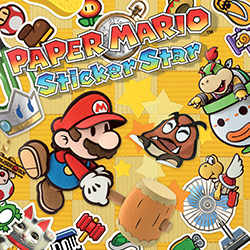







/cdn.vox-cdn.com/uploads/chorus_asset/file/20148993/Paper_Mario_The_Origami_King_Earth_Vellumental_Temple_collectibles.jpg)


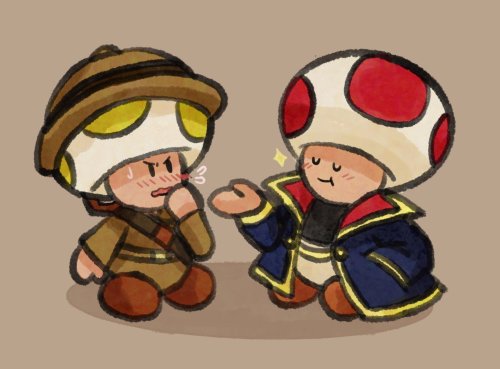


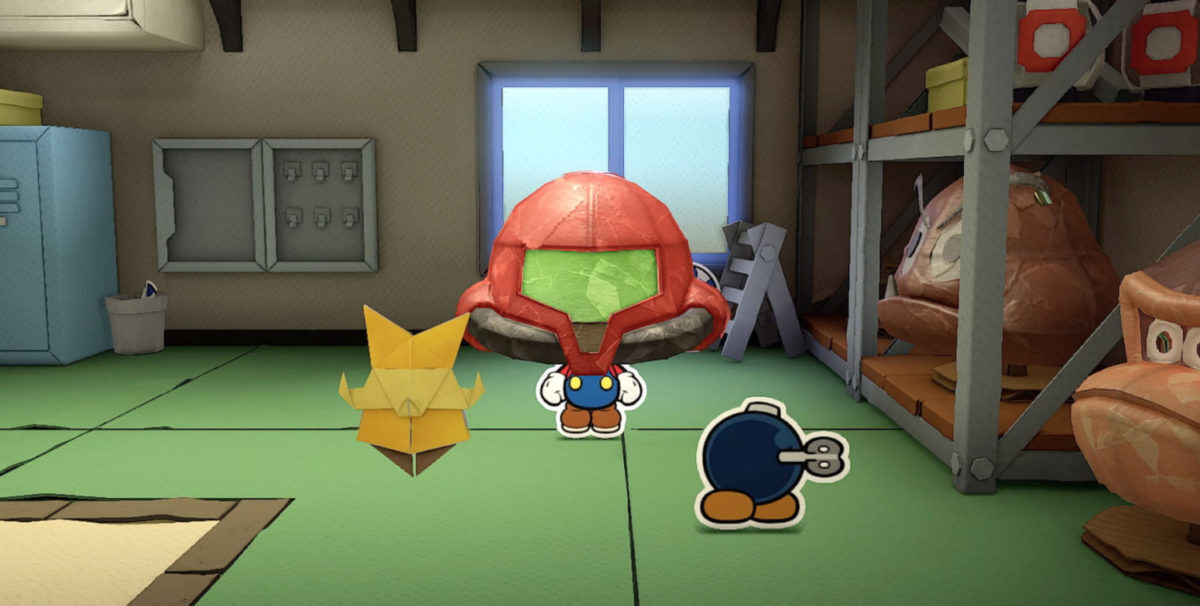
:no_upscale()/cdn.vox-cdn.com/uploads/chorus_asset/file/20083353/Paper_Mario_The_Origami_King_combat_arena.jpg)
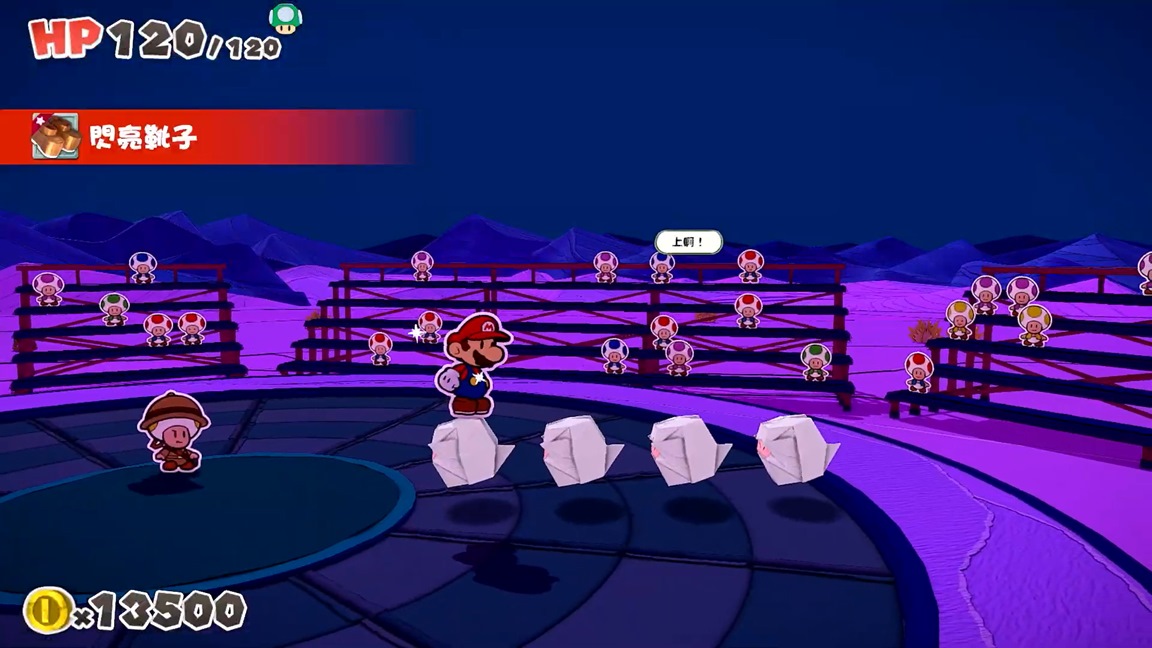



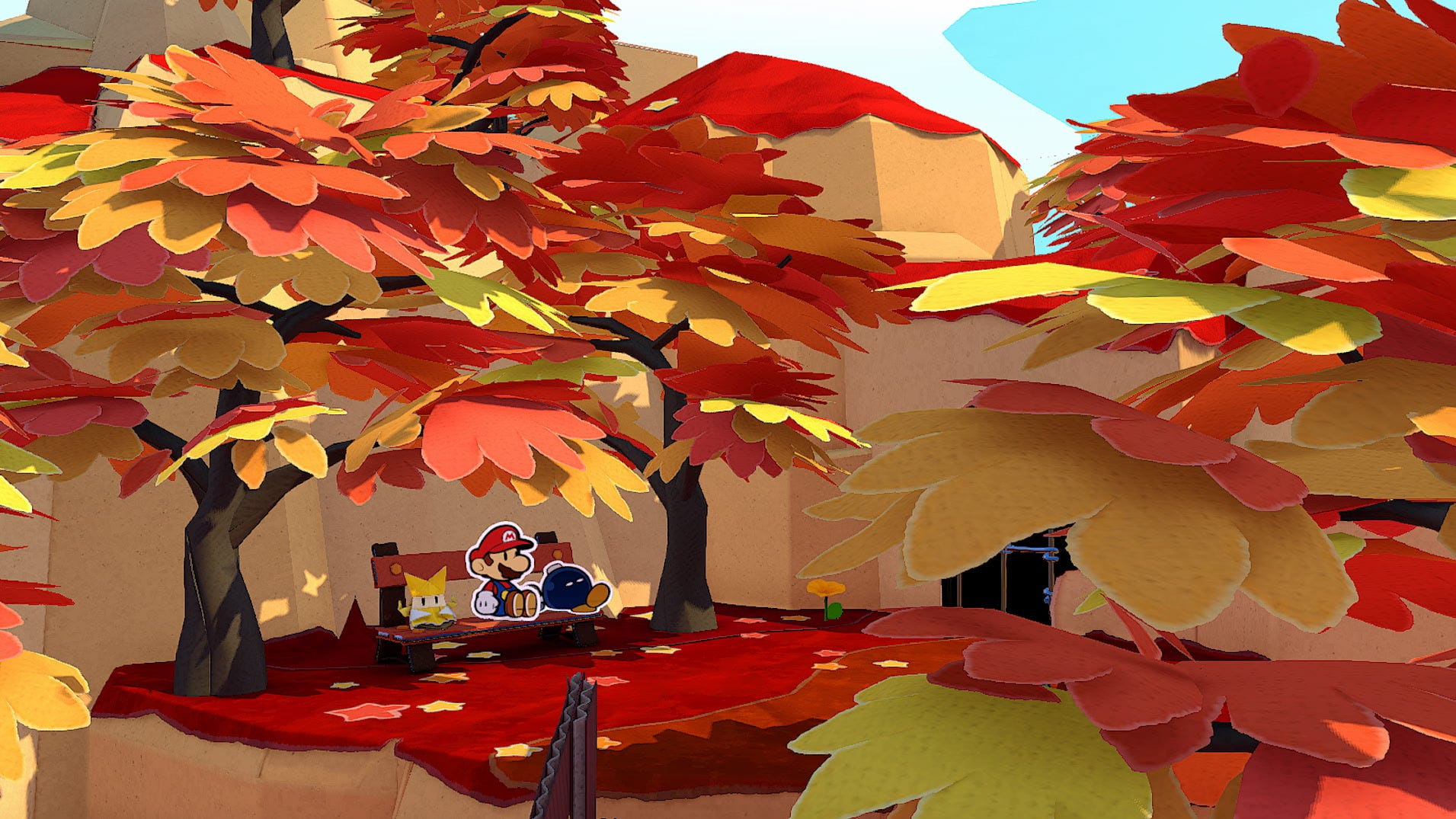
No comments:
Post a Comment